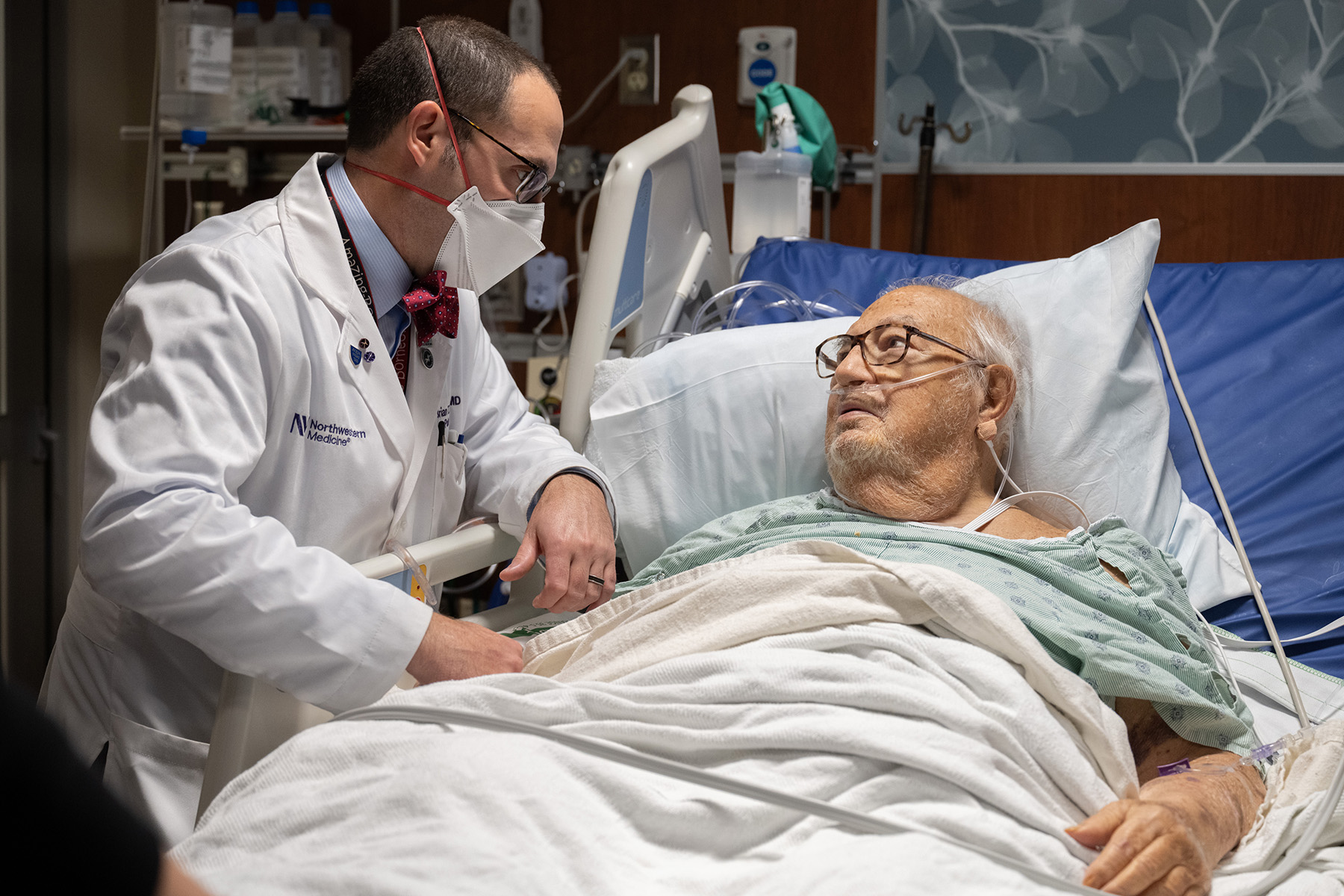Four Feinberg faculty members have been inducted into the American Society for Clinical Investigation (ASCI), one of the nation’s oldest medical honor societies composed of more than 3,000 physician-scientists, and three additional Feinberg faculty members have also been honored with the ASCI Young Physician-Scientist Award, which recognizes physician-scientists who are early in their first faculty appointment and have made notable achievements in their research.
This year’s ASCI inductees include Amani Fawzi, MD, the Cyrus Tang and Lee Jampol Professor of Ophthalmology; Craig Horbinski, MD, PhD, director of Neuropathology in the Department of Pathology; Sanjiv Shah, ’00 MD, the Neil J. Stone, MD, Professor of Medicine in the Division of Cardiology; and Benjamin Singer, ’07 MD, ’10 GME, the Lawrence Hicks Professor of Pulmonary Medicine.
The Feinberg faculty members who were honored with the ASCI Young Physician-Scientist Award are: SeungHye Han, MD, MPH, assistant professor of Medicine in the Division of Pulmonary and Critical Care; Fei Li Kuang, MD, PhD, assistant professor of Medicine in the Division of Allergy and Immunology; and Whitney Stevens, MD, PhD, ‘13, ‘14 GME, assistant professor of Medicine in the Division of Allergy and Immunology and of Otolaryngology – Head and Neck Surgery.
Promoting Early Identification of Age-Related Macular Regeneration

“To be inducted to ASCI, as a member of a very small group of ophthalmologist members, is such a great honor,” Fawzi said.
Fawzi’s research utilizes translational approaches to study age-related macular degeneration and diabetic retinopathy, both major causes of vision loss. Her work’s particular focus is on using high-resolution and functional retinal imaging, techniques used in her most recent study published in the journal Arteriosclerosis, Thrombosis, and Vascular Biology, where she used high-resolution imaging to visualize and characterize the timeline for vascular cell loss in diabetic retinopathy in living human eyes.
“Our results represent a major advance in our understanding of vascular mural cell compromise in diabetes. We discovered that these vascular supporting cells begin to disappear from the retinal blood vessels very early on, well before any other clinical manifestations of diabetes. We believe our findings will stimulate the field towards developing early interventions to preserve these cells and that using imaging technology, we can monitor the impact of such treatments on the health of these critical cells in the living eye and ultimately prevent vision loss in diabetes,” Fawzi said.
Her research has also advocated for early monitoring of age-related macular degeneration. In an additional study published in PLoS One, her team provided evidence that identifying early-stage disease, which involves identifying newly formed blood vessels invading the retina called choroidal neovascularization, may help prevent disease progression.
“Once these lesions are identified in an eye, we insist on seeing the patient on a more stringent follow-up schedule, and we use the OCT angiography technology at each of these visits,” Fawzi said. “This heightened vigilance allows us to detect the exudative conversion, which occurs in about one-fifth of these eyes, a lot more readily.”
Most recently, Fawzi’s work was supported by a $75,000 grant from the International Research Collaborators Award from Research to Prevent Blindness, which will support a multitude of scientific collaborations at Feinberg and beyond that have the potential to accelerate the development of treatments for blinding disorders.
Discovering Key Characteristics of Glioma Tumors

“Being inducted into the ASCI is a great honor,” said Horbinski, who is also a professor of Neurological Surgery and of Pathology and a member of the Robert H. Lurie Comprehensive Cancer Center of Northwestern University.
Horbinski’s laboratory aims to improve the care of patients with gliomas — tumors in the brain or nervous system that form from glial cells. This includes studying how specific mutations in gliomas alter their biological and clinical behavior. His research particularly focuses on mutant isocitrate dehydrogenase 1 (mutIDH1), which is found in a subset of malignant gliomas and increases a patient’s risk of seizures.
Recent work from Horbinski’s laboratory found that blocking mutIDH1 enzyme activity with a newly developed small molecule inhibitor reduced seizures in models of mutIDH1 gliomas, findings which were published in the Journal of Clinical Investigation.
“We’ve showed definitively that the chemical product of the IDH mutant enzyme, which is called D-2-hydroxyglutarate, is responsible for causing increased neuronal network bursting, and that’s basically the experimental equivalent of a seizure,” Horbinski said. “We were able to show this in cultured neurons as well as in animal models of IDH mutant gliomas. But what was especially exciting is that we were able to substantially reduce those seizures by treating the cultures as well as the animals with an inhibitor that’s specifically designed to block the IDH mutant enzyme from working.”
In a separate project, a new tool developed by Horbinski’s team may also help physicians predict the risk of venous thromboembolism (blood clots in the veins) in patients with adult-type diffuse gliomas, detailed in a recent study published in Blood. The tool could help physicians identify glioma patients at highest risk for debilitating and potentially lethal venous thromboemboli (when a blood clot forms in the vein) and focus anticoagulant prophylaxis on those patients.
“For the first time, we have an evidence-based prediction of venous thromboembolism specifically for glioma patients,” Horbinski said. “This tool is a web-based calculator. You enter in basic information about the patient and tumor, and get a percent of risk at one, three, six and 12 months after diagnosis.”
Improving the Understanding and Treatment of Heart Failure with Preserved Ejection Fraction
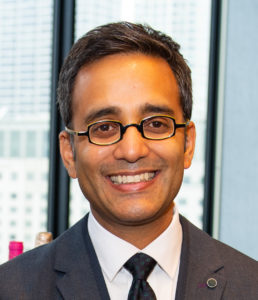
“Getting elected to ASCI is an incredible honor. I am grateful to my wonderful colleagues and numerous talented mentees who are really the ones who have made all of our research possible. I am also very lucky to have been at Northwestern, with its culture of collaboration and excellence, for my entire faculty career,” said Shah, who is also director of the Center for Deep Phenotyping and Precision Therapeutics in the Institute for Artificial Intelligence in Medicine.
Shah’s clinical and research focus is heart failure with preserved ejection fraction (HFpEF), which is characterized by stiffening of the heart muscle, causing fluid to build up in the lungs and the body.
Greater than 50 percent of patients with heart failure have HFpEF, which affects at least 35 million people worldwide and is associated with high morbidity and mortality. In 2007, Shah founded the first dedicated HFpEF program in the world at Northwestern University. His research investigates the pathogenesis of heart failure; identifies novel therapeutics for heart failure, pulmonary hypertension, and cardiac amyloidosis; and develops novel techniques for machine learning and artificial intelligence for the classification, diagnosis and monitoring of cardiovascular diseases.
Shah’s research has contributed to the approval of SGLT2 inhibitors (such as dapagliflozin) for HFpEF, with publications in the New England Journal of Medicine, Nature Medicine, and The Lancet. More recently, Shah and colleagues published a trial in the New England Journal of Medicine showing that semaglutide, commonly known as Ozempic or Wegovy, is also beneficial for the treatment of HFpEF in the setting of obesity.
“No medication previously tested in clinical trials has achieved this level of benefit in symptoms and quality of life in patients with heart failure of any type. These results demonstrate that in HFpEF and obesity, semaglutide is beneficial across a wide spectrum of patients,” Shah said.
Identifying novel subtypes of HFpEF and investigating the biological mechanisms underlying these subtypes has been the major focus of Shah’s research, culminating in Northwestern receiving $18.1 million in funding to lead the NIH HeartShare Study, a large-scale, multicenter study which aims to use deep phenotyping, next-generation omics, an artificial intelligence to deconstruct HFpEF and identify novel diagnostics and therapeutics for the disorder.
Advancing Pulmonary and Critical Care Medicine
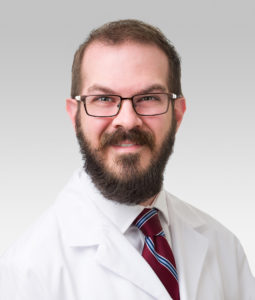
“Election to the ASCI is a humbling honor. I am grateful to those who supported my nomination for ASCI election as well as my growth as a physician-scientist,” said Singer, who is also an associate professor of Medicine in the Division of Pulmonary and Critical Care Medicine and of Biochemistry and Molecular Genetics.
Singer’s clinical care and research laboratory seeks to better understand DNA methylation and gene expression in T-cells as features that may help treat acute lung inflammation and repair lung damage.
In 2021, Singer, along with a team of Feinberg faculty members, were awarded a $14 million grant from the National Institute of Health’s National Heart, Lung, and Blood Institute to study the mechanisms that promote lung tissue repair in patients with severe viral pneumonia. The project is also being supported by resources available through Northwestern’s Successful Clinical Response In Pneumonia Therapy (SCRIPT) Systems Biology Center.
Singer was a co-lead author of a first-of-its-kind study, where scientists analyzed immune cells from the lungs of patients with pneumonia due to COVID-19 and demonstrated how SARS-CoV-2, the virus that causes COVID-19, behaves differently than other bacteria and viruses such as influenza. In the study published in Nature, Singer and colleagues found that SARS-CoV-2 hijacks the lungs’ immune cells to spread infection across the lung, damaging multiple organs within its path.
“Already, scientists at Northwestern and elsewhere are anticipating mechanisms by which this RNA virus, which mutates quickly, will evade current vaccines,” Singer said. “This study will help us develop treatments to reduce the severity of COVID-19 in those who develop it.”
In another recent study published in the Journal of Clinical Investigation also co-led by Singer, investigators found that by applying machine learning to medical record data that secondary bacterial pneumonia that does not resolve was a key driver of death in patients with COVID-19.
“Our study highlights the importance of preventing, looking for and aggressively treating secondary bacterial pneumonia in critically ill patients with severe pneumonia, including those with COVID-19,” Singer said.
Uncovering the Cellular Mechanisms of Lung Development
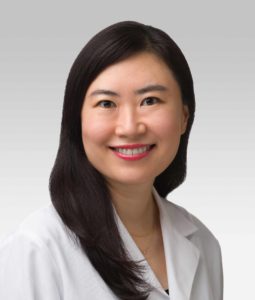
“It is an honor to be recognized by ASCI,” Han said.
Han’s research aims to characterize the cellular mechanisms underlying proper lung development and how these mechanisms may be altered in the context of infection and disease.
In collaboration with Navdeep Chandel, PhD, the David W. Cugell, MD, Professor of Medicine in the Division of Pulmonary and Critical Care and of Biochemistry and Molecular Genetics, Han discovered that mitochondria regulate essential cellular signaling for the development of epithelial cells in the lungs, cells which are crucial for the exchange of oxygen and carbon dioxide to avoid respiratory failure.
The findings, published in Nature, show that mitochondria have functions beyond energy production in the cell and may be a potential target for future therapeutic interventions for lung damage.
“We’re now examining the possibility that mitochondrial integrated stress response (ISR) signaling could be disrupted during lung repair after injury resulting in lung diseases like pulmonary fibrosis or prolonged viral pneumonia. If this is true, it could open new avenues for treatments that target mitochondria-dependent ISR signaling in diseases involving lung damage and repair,” Han said.
Investigating the Underpinnings of Allergies and Eosinophilic Gastrointestinal Disorders
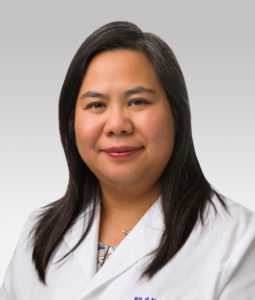
“I am truly honored to receive the ASCI Young Physicians Scientist Award. I am looking forward to both fellowship with and mentorship from like-minded physician-scientists in ASCI,” Kuang said.
Kuang studies eosinophilic disorders, with a focus on eosinophilic gastrointestinal disorders (EGID) — a group of rare gastrointestinal (GI) diseases caused by chronic inflammation in the GI tract — and hypereosinophilic syndromes (HES) —disorders characterized by the overproduction of specialized immune cells called eosinophils, which can cause organ damage.
Her most recent work characterized a common cell subtype known to cause both IgE-mediated food allergies and EGID called pathogenic effector Th2 (peTh2) cells, which are implicated in both immune and allergy responses in the body.
In the study, published in the journal Clinical and Experimental Allergy, Kuang’s team found that peTh2 immune cells were significantly increased in patients with IgE-mediated food allergies and EGID, however the cytokines — small proteins that control the growth and activity of immune cells — produced by these cells were different between the two disorders.
“This observational study is the first to utilize deep phenotyping to document the presence and characteristics of CRTH2+CD161+ (peTh2) memory CD4+ T cells in patients from two clinically distinct atopic disorders, FA and EGID, as compared to patients with IgE-mediated food allergy plus EGID or HV [healthy volunteers]. We confirmed that peTh2 cells were elevated in both patients with IgE-mediated food allergy and patients with EGID but displayed distinct cytokine signatures,” the authors wrote.
Improving the Understanding of Chronic Rhinosinusitis and Asthma

“I am honored to receive the ASCI Young Physician Scientist Award. I am excited to meet the other award recipients as well as ASCI members and potentially establish new mentorships and collaborations,” Stevens said.
Stevens’s research focus is on aspirin-exacerbated respiratory disease (AERD), a severe form of asthma, chronic rhinosinusitis with nasal polyps (CRSwNP), and sensitivity to aspirin and other non-steroidal anti-inflammatory drugs that inhibit an enzyme called cyclooxygenase-1.
Her translational research also aims to improve the understanding of chronic rhinosinusitis and asthma. In a recent study published in the Journal of Allergy and Clinical Immunology, Stevens and colleagues discovered that basophils, which are potent type 2 effector cells, are elevated in nasal polyps of patients with AERD compared to patients with CRSwNP. Nasal polyp basophils were also found to have degranulated more in patients with AERD than in patients with CRSwNP, and the extent of basophil degranulation correlated with a higher severity of sinus disease.
“This study may have uncovered a new pathway contributing to the exaggerated disease pathogenesis and severity unique to AERD,” the authors wrote.
The ASCI, founded in 1908, is a medical honor society composed of more than 3,000 physician-scientists who are advancing research, clinical care, medical education and leadership in academic medicine and the life sciences industry. This year’s inductees join more than 40 other Feinberg faculty as members of the society.


